Ammonites were sea creatures that lived before and at the same time as dinosaurs. They were a bit like a modern-day squid or octopus with a shell. Ammonite fossils have been found all over the world. The fossils resemble a curled-up snake, and for a while, people thought they were remains of snakes, earning them the nickname snakestones!
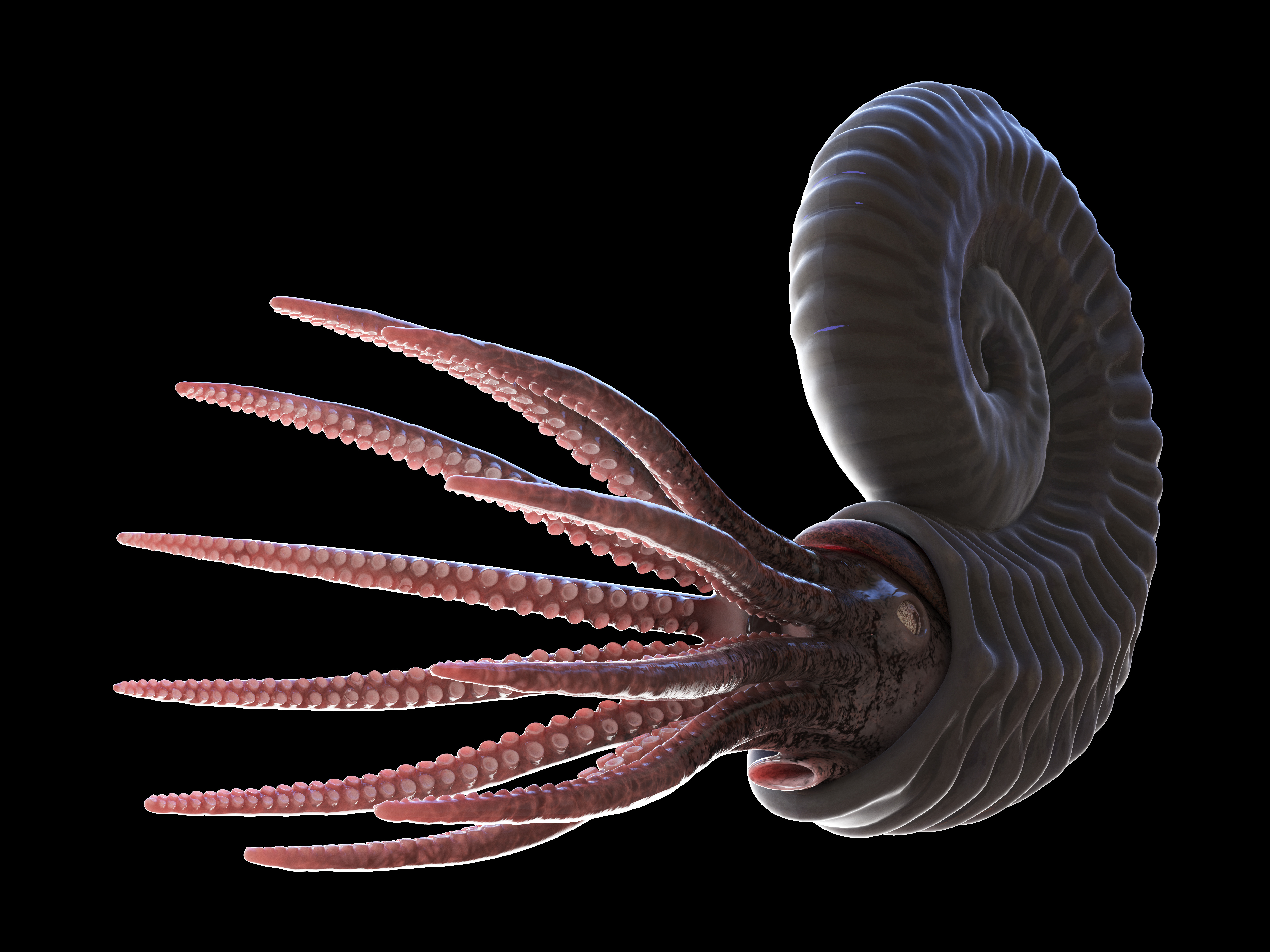
Ammonites made extra chambers in their shell as they grew, which gave the shell a distinct spiral shape.
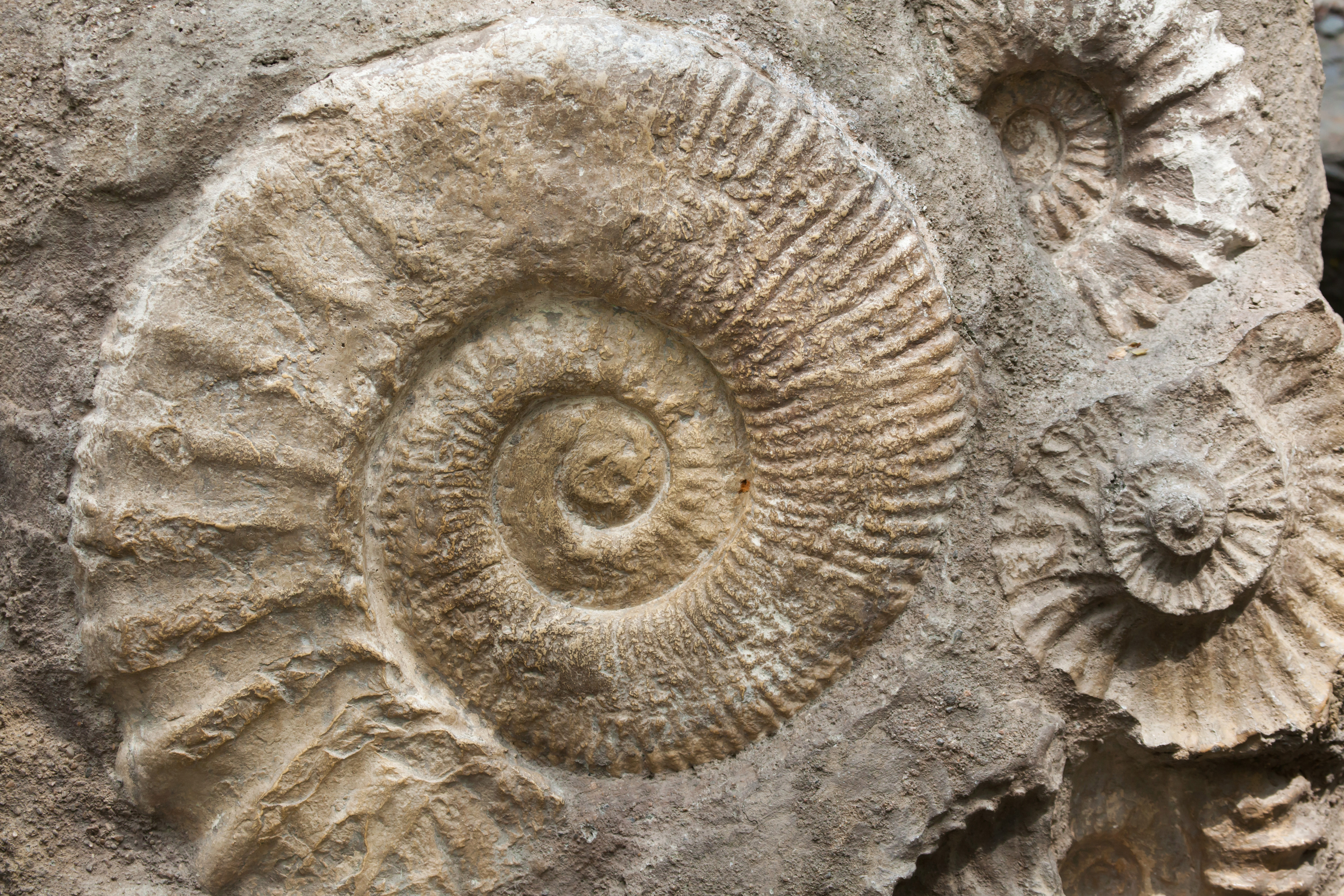
How did ammonites swim?
The hollow inner chambers of an ammonite’s shell helped them float and control their buoyancy. Ammonites had a siphuncle system which allowed them to diffuse gas in and out of the empty shell to change their buoyancy. Only the outermost chamber housed the soft body.
They squirted water to push themselves along. Modern cephalopods ( octopus, squid, cuttlefish and nautilus ) use this same jet propulsion method to move.
When did ammonites live?
It’s thought that ammonites first appeared around 400 million years ago and became extinct about 66 million years ago during the same extinction event that killed non-avian dinosaurs and many other species of animals and plants on Earth.
What did ammonites eat?
Ammonites are thought to have eaten plankton and small crustaceans and were eaten by dinosaurs such as mosasaurus, ichthyosaurus and plesiosaurus.
Ammonite fossils
Ammonites were hugely abundant in the ocean for a very long time, so fossils are plentiful. Scientists use the number and type of ammonite fossils found in a particular layer of rock to date other fossils in the same layer. They are known as index fossils.
Ammonite fossils are found in marine sedimentary rock. If you’re in the UK, Lyme Regis in Dorset is a good place to go ammonite hunting.
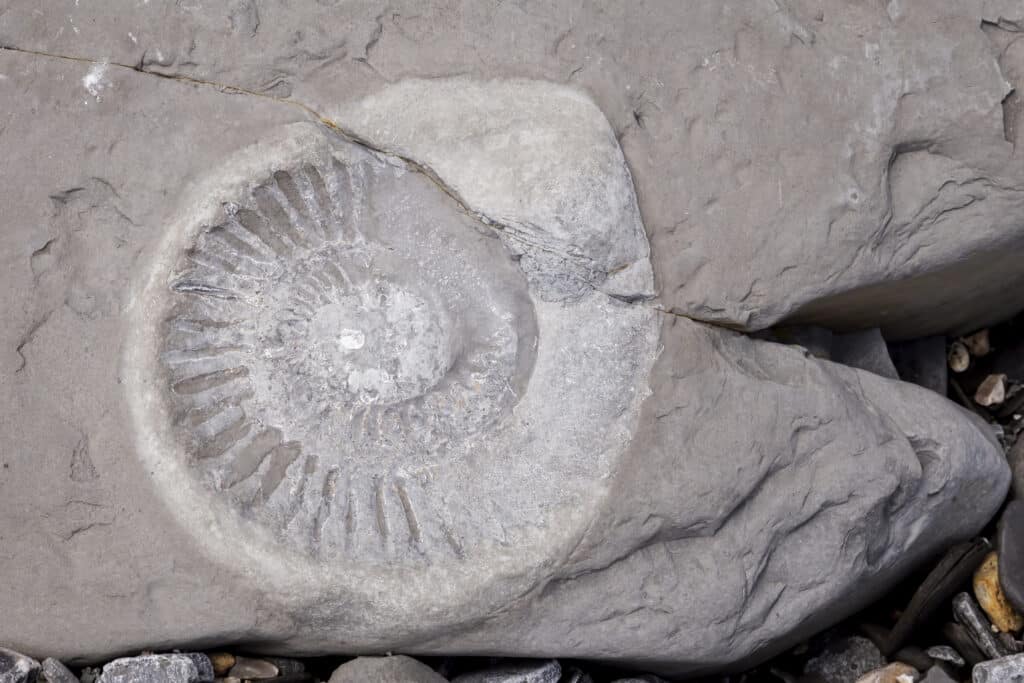
Ammonite Investigation
How did ammonites control their buoyancy?
The soft body of an ammonite only lived in the outermost section of its shell. The other chambers were sealed off as the ammonite grew and used to control its buoyancy.
Ammonites had a siphuncle system which allowed them to diffuse gas in and out of the empty shell to change their buoyancy. The siphuncle also pumped water out of empty chambers as the body grew.
We can demonstrate how changing the density of the ammonite shell would have changed its buoyancy with a simple demonstration.
You’ll need
A jar or a large bottle
Small test tube with a bung or air-tight lid
Buttons, plasticine or another small object
Water
Instructions
Fill the jar or bottle almost to the top with water. The jar needs to be deep enough for the test tube to be completely covered with water when submerged.
Place the empty test tube with the lid on into the jar. It should float on the surface of the water. The test tube represents an ammonite.
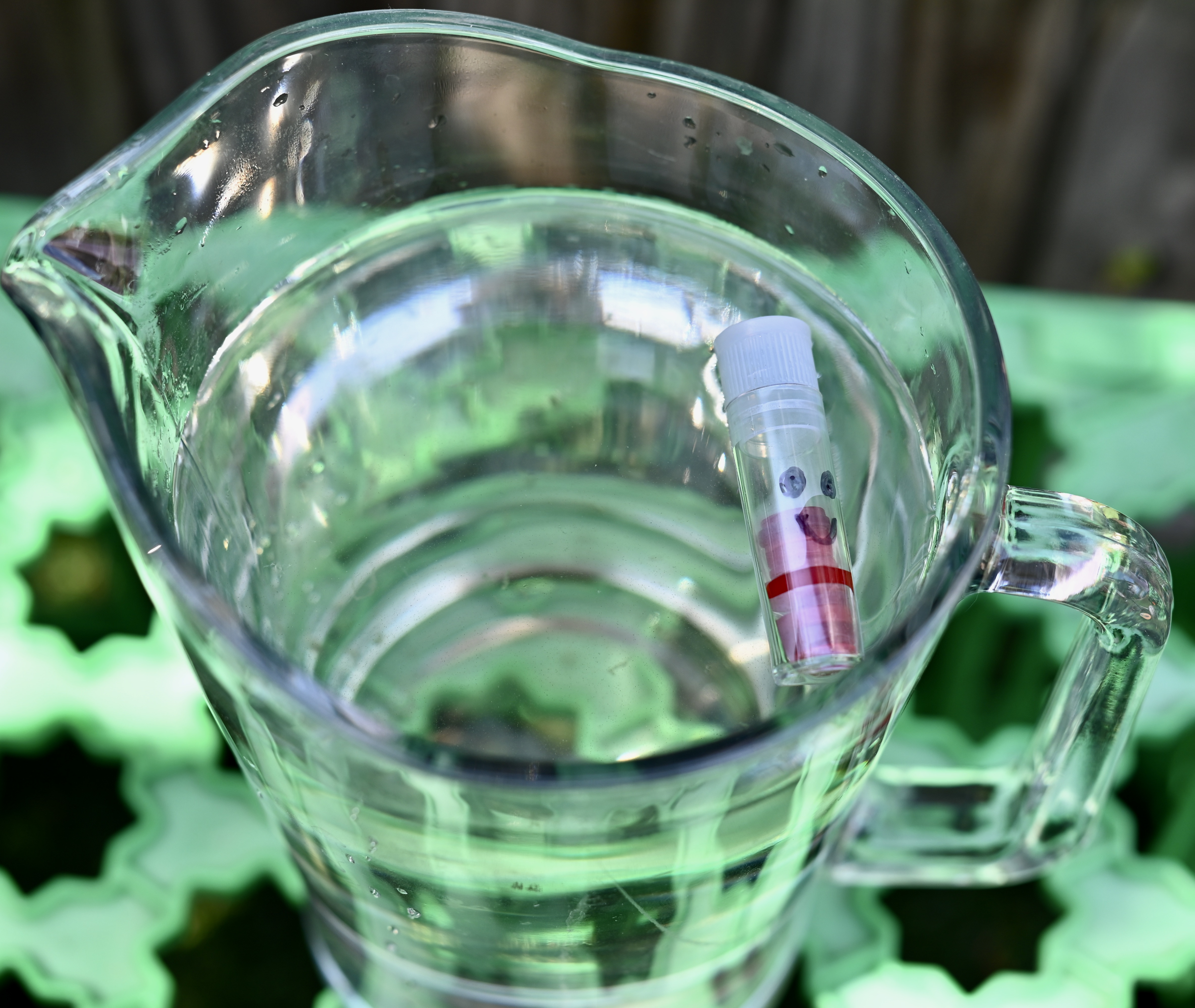
Add buttons or plasticine to the test tube until it just starts to dip under the surface of the water.
Add a little bit of water to the test tube containing buttons and watch what happens. You should find the position of the test tube in the water changes the more water you add.
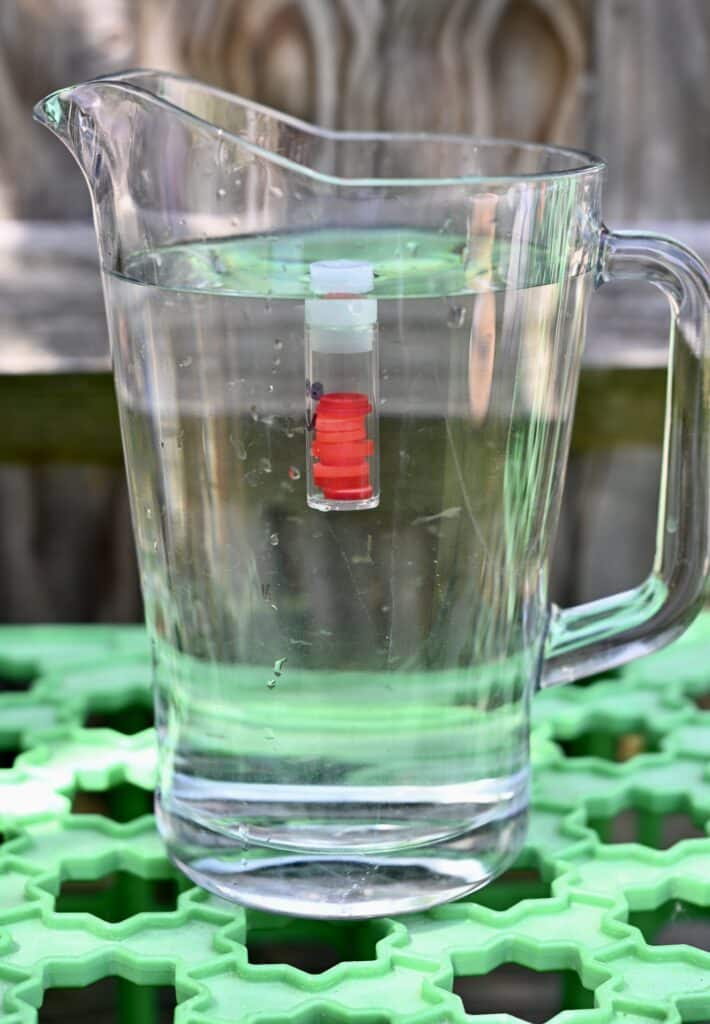
Keep adding more water to the test tube until it sinks to the bottom.
By adding water, you are changing the density of the test tube. When the density of the test tube is greater than the density of the water it is placed in, the test tube will sink.
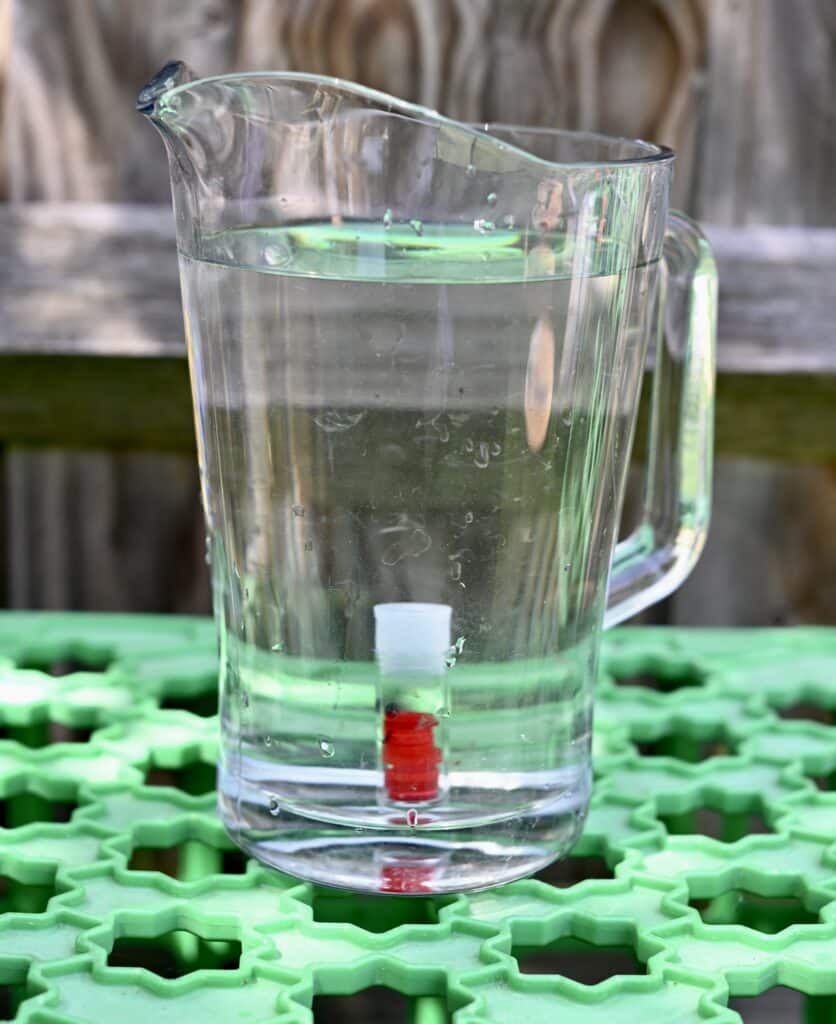
When water is added to the test tube, its whole density changes, which means its position in the water changes. This is how ammonites control their buoyancy. The siphuncle pumped water out of the newly empty shell chambers and gases in to allow the ammonites to float at the level they wanted.
More about ammonites
Find out how x-rays revealed what ammonites ate.
Read about the inspirational Mary Anning and make a clay ammonite.

Last Updated on June 29, 2023 by Emma Vanstone







Leave a Comment